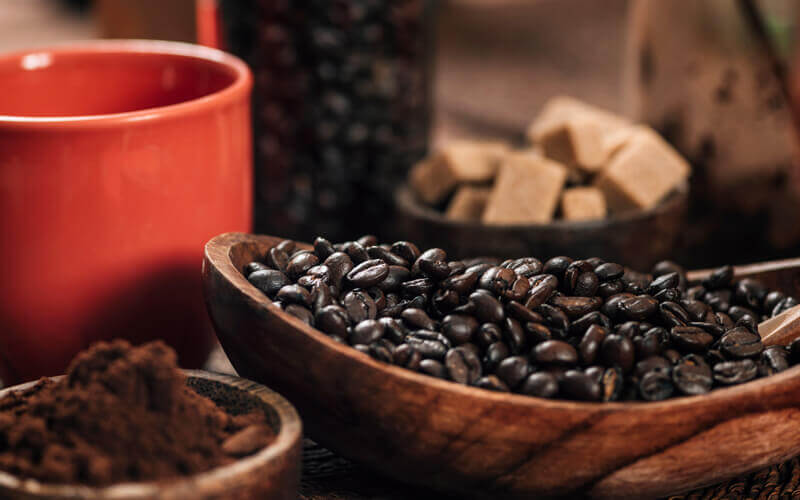In the Philippines, coffee has a history as rich as its flavor. In this article, we’ll be talking about the history of kape in the Philippines that dates back as far as 1740.
History of Kape in the Philippines
The Early Years
In 1690, Arabica coffee was first introduced in West Java. Muslim pilgrims have already smuggled Yemeni seed to West India, the true source of Dutch seedlings, and probably introduced it to Sumatra.
Then, West Sumatran coffee was sold to British interlopers and American missionaries further spread coffee, including to the Philippines in the 18th century.
Coffee consumption in Southeast Asia grew and was closely linked culturally with Islam.
Coffee was first introduced in the Philippines as early as 1730 when a Franciscan friar planted the first coffee tree in Lipa, Batangas. Coffee that was introduced to the Philippines came from Mexico.
Later, coffee production was promoted by Augustinian friars, Benito Vara and Elias Nebreda, in other parts of Batangas including Tanauan, Ibaan, San Jose, Lemery, and Taal. Coffee plantations became a crucial foundation of the economy of Batangas.
Eventually, Lipa was labeled as the coffee capital of the Philippines.
☕ Start Your Own Coffee Shop Business
Passionate about coffee and entrepreneurship? Join the CoffeeSpot family and bring the café experience to your local area. Our coffee shop franchise program is perfect for aspiring business owners who want to start strong with a trusted brand.
- ✅ Low startup cost options
- ✅ Full barista & operations training
- ✅ Marketing support & brand recognition
- ✅ Ongoing mentorship from HQ
Growth in the 19th Century
In 1865, there was a sudden increase of demand for Philippine coffee in the United States, because it became cheaper to import coffee from the Philippines rather than importing coffee from Brazil. Kapeng Barako from Batangas was shipped from Manila to San Francisco – in fact, half of the Philippines’ coffee export in that year were shipped to San Francisco.
Following the opening of the Suez Canal in 1869, coffee also began to be exported to Europe. In 1876, coffee was introduced in Amadeo in neighboring Cavite and the province started to produce coffee as well.
However, Lipa remained as the main coffee producer in the Philippines, and Kapeng Barako from Batangas cost five times as much as Java beans.
In 1880, the Philippines was the fourth largest exporter of coffee beans. Coffee production in competitor regions of Africa, Java, and Brazil declined when coffee rust plagued the regions. So, from 1887 to 1889, the Philippines was the only source of coffee across the globe.
Decline
After Africa, Java, and Brazil were infected, the Philippines was hit with the coffee rust disease in 1889. This disease destroyed a majority of the Arabica coffee trees in the Philippines, along with a coincidental insect infestation.
This destroyed all coffee trees in Batangas, and crushed what was – until that point – a major source of income in the Philippines, as Batangas was a major source of income until this point. Their coffee production was reduced to one-sixth of what it had once been, allowing Brazil to once again take first place in the global coffee market.
Meanwhile, surviving coffee seedlings were transferred to Cavite as many farmers in Batangas shifted to growing other crops.
Post-World War II
Fortunately, the coffee rust incident didn’t spell the end for Filipino coffee production. As the years passed, the Philippines worked to regain their coffee profits. In the 1950s, the Philippines – with Assistance from Americans – brought Robusta beans to the country. Though these were lower quality than Arabica, they helped recompense for the lost coffee income.
Further, instant coffee began to be produced in commercial quantities which resulted in the increase in demand for coffee again. Due to this increased demand, many farmers started to shift back to growing coffee in the 1960s.
However, importation of coffee was stopped momentarily due to a surplus in the world market due to a sudden proliferation of coffee farms. In 1980, the Philippines became a certified member of the International Coffee Organization (ICO).
☕ Start Your Own Coffee Shop Business
Passionate about coffee and entrepreneurship? Join the CoffeeSpot family and bring the café experience to your local area. Our coffee shop franchise program is perfect for aspiring business owners who want to start strong with a trusted brand.
- ✅ Low startup cost options
- ✅ Full barista & operations training
- ✅ Marketing support & brand recognition
- ✅ Ongoing mentorship from HQ
Present
Demand for coffee started experienced growth. In 2002, the Philippines’ yearly coffee consumption was 75,000 metric tons – this figure grew to 170,000 metric tons annually by 2018! As of the same year, the Philippines started to import coffee due to low coffee production at only 35,000 metric tons annually.
According to the Department of Agriculture, the country imports about 75,000 to 100,000 metric tons of dried coffee beans amounting to Php 7 to 10 billion from Indonesia and Vietnam.
By 2016, Philmech – an agency under the Department of Agriculture – states that Mindanao is the leader of local production of dried coffee beans, and Sultan Kudarat is the province that produces the most coffee in the island.
On the other hand, coffee production in traditional cultivation areas such as Calabarzon and Cordillera experienced a decline because of strong typhoons that battered the region in the same year.
Types of Coffee that Grow in the Philippines
Now that you have some insight in to the history of kape in the Philippines, let’s discuss the types of coffees that grow in the country. Below are four kinds of coffee that thrive in the Philippine’s climatic soil.
- Arabica.
Arabica is one of the most popular and widely consumed coffee in the world. Mainly, it is cultivated in high altitude areas. Arabica grown in the mountainous Cordillera region is generally sweet and acidic to the taste, while those in Mindanao has a floral aroma and bittersweet taste. Some of the best Arabica coffee comes from the provinces of Mt. Matutum, Sagada, Ifugao, and Benguet. - Robusta.
Unlike Arabica, Robusta coffee thrives in lowlands such as in Mindoro, Cavite, and Bulacan. With its high caffeine content, Robusta has a sharper flavor and a woody or burnt aftertaste. This type of coffee is the most commercialized, and is often used to make instant coffee products. - Liberica.
Abundant in the provinces of Quezon, Cavite, and Batangas, Kapeng Barako is the most popular variation of Liberica in the Philippines. Kapeng Barako is a favorite part of Filipinos’ breakfast, particularly those in these provicnes. This type of coffee has a strong woody taste with high natural acidity and a strong, distinct aroma. - Excelsa.
Since they have a similar taste, Excelsa coffee is often confused as Robusta or Liberica. However, pure Excelsa has a distinct fruity and sweet flavor that is somewhat similar to jackfruit. Further, its aroma is more prominent than its taste. Commonly, it is cultivated in the mountains of Quezon and Batangas, and in Sorsogon, Bicol region.
The Bottom Line
The history of kape in the Philippines dates back as far as 1740. In fact, at one point, the Philippines was considered the top source of coffee in the entire world!
However, coffee rust disease and insect infestation nearly wiped out the country’s coffee trees, causing a decline in the country’s coffee production. Fortunately, the coffee rust incident didn’t spell the end for Filipino coffee production.
As the years passed, the Philippines worked to regain their coffee profits. Today, the country continues to produce coffee. The four kinds of coffee that thrive in the Philippine’s climatic soil include Arabica, Robusta, Liberica, and Excelsa.
☕ Start Your Own Coffee Shop Business
Passionate about coffee and entrepreneurship? Join the CoffeeSpot family and bring the café experience to your local area. Our coffee shop franchise program is perfect for aspiring business owners who want to start strong with a trusted brand.
- ✅ Low startup cost options
- ✅ Full barista & operations training
- ✅ Marketing support & brand recognition
- ✅ Ongoing mentorship from HQ






